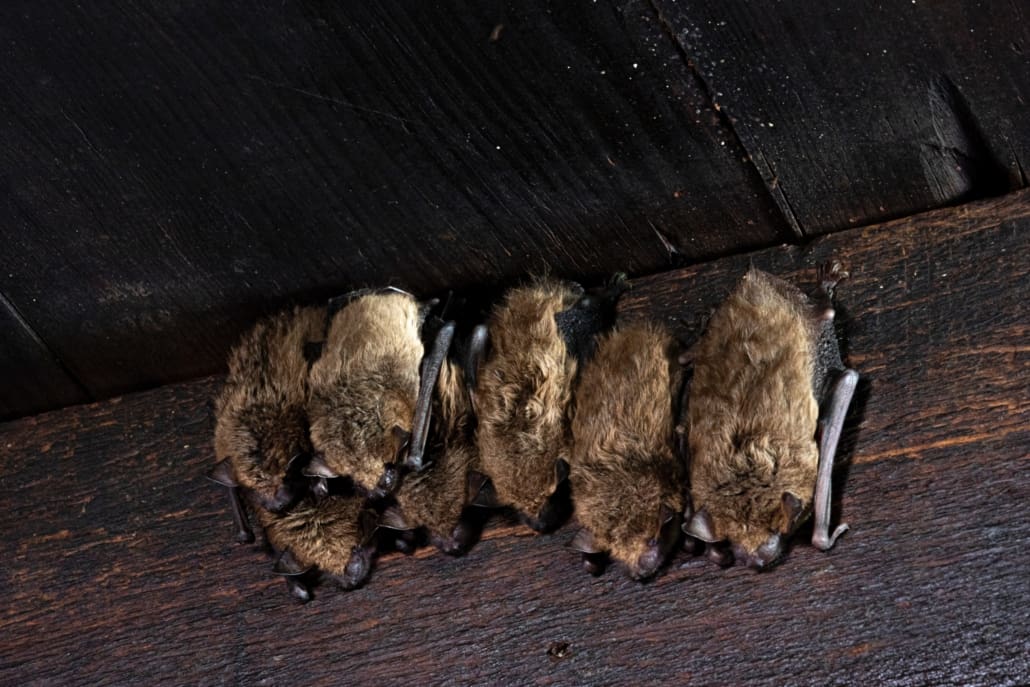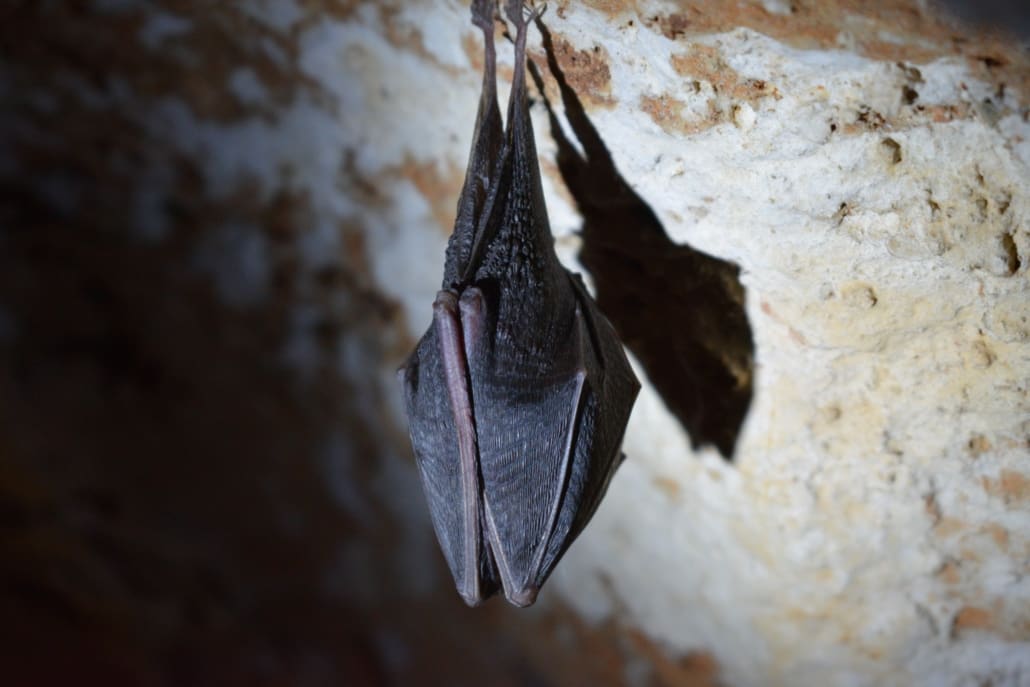How to Get Rid of a Bat in the House
Are you wondering how to get rid of a bat in the house? As nocturnal creatures, bats spend their days hiding out in small crevices and cracks; in nature, these can be found hollow trees and caves, but bats can also find them in and around your home. Because they frequent dark, damp environments, bats are often associated with all things spooky and unpleasant — so when homeowners realize that a bat has found its way into their living space, most aren’t thrilled about it. While they are not usually aggressive, bats are still unwanted house guests that can potentially carry dangerous bacteria and viruses that can be harmful to humans.
Read on to determine if you have a bat problem within your home, as well as the solutions a professional would take to remove them and prevent future infestations. Bats are complex creatures and are also protected species. Because of this, you’ll want to be sure you understand how to legally get rid of bats in the house. If you are looking to prevent future bat infestations or remediate an area in your home damaged by bats, contact the pros at Pest Pros.
Where Might You Find Bats in Your House?
Most bats in North America are a lot smaller than you think. This makes it pretty hard to spot the quick flying mammals but they do have tendencies; bats like warmer temperatures, the dark, and less traffic. For these reasons, here are a few common places to find bats in your house:
- Attics
- Within your walls
- Garages
- Roofline of your house
- Sheds and other outdoor structures
Because bats can carry harmful bacteria and viruses, it’s best to hire a professional to help identify where the bats are located in your home. If you do decide to check for bats without a professional, however, be sure to wear thick gloves and a jacket as they can carry rabies. Bats don’t tend to attack, but they will defend themselves just like most animals.
One good tip when looking for bats is never put your hand somewhere before looking. Bats can be anywhere and can squeeze through small holes. So make sure to point that flashlight before sticking your hand in.
Another tip is to check high before checking low. Bats are more likely to be above you on the ceiling, behind curtains, vent openings, and high shelves. Even with that being said, don’t forget to look down. These nocturnal creatures do in fact crawl and can be found under items on the floor. You might also find bat droppings, called guano, on the floor. Guano looks quite similar to mouse droppings so that would be an indication of bats living in your home. If you do find little pellets, proceed with caution because it could be dangerous to humans and we explain why later.


Steps to Getting Rid of a Bat in Your House – Effectively and Safely
Once a bat infiltrates your home, the strong smell of their urine and droppings can alert other bats of their location and create a larger bat infestation in your home. The best way to prevent a bat colony from setting up camp in your attic or other dark living areas is to implement exclusion pest control measures that can keep them out for good. Bat-proofing a building is the only efficient and permanent way to eliminate bat problems. There are several steps that your pest control professionals will take to get rid of bats in your home for good:
- Inspection. Your pest control experts will observe your home to find out where bats are entering and exiting. This allows them to create a strategy for excluding the pests.
- Install a one-way exit device. A one-way exit device is installed at all existing entry/exit points currently used by bats. This can be done by using netting or tubes to cover these openings and will allow the bats that have entered your home to find their way out without inviting more pests inside.
- Seal any other gaps or openings in the home that bats can enter through. Bats are unable to create their own entry points into your home. They are, however, able to enter through openings in your home that are as small as ⅜ of an inch. Once all of the current bats are excluded from your home, close all the gaps, even in areas of the home where bats weren’t living previously.
- Clean up, clean up, everybody clean up. Once everything is closed and it seems like your job is done, make sure to clean up, deodorize, and disinfect all of the urine and droppings. Not only does it attract bats from returning, but bat droppings could also contain diseases that are harmful to humans so make sure to get thoroughly clean with professional gear.
Bat Prevention
While bat removal relies primarily on exclusion techniques, there are preventative measures that can be taken to ensure that your home is free of bats by discouraging them from entering in the first place. There are a couple of ethical ways that you can deter bats from entering the premises.
- Build a bat house. No, not the “Bat Cave” — a bat house. Similar to a treehouse, you can build one or buy one to mount on a pole or tree. A bat house won’t necessarily draw bats out of your house, but it will invite them to stay outside of your home. Plus, there are benefits of having bats in your backyard.
- Apply natural bat repellent spray. A popular bat prevention technique is using a natural bat repellent spray. You can find repellents at most hardware stores and although most use natural ingredients, make sure to read the instructions carefully because it could be harmful to people and other animals.
- Consider ultrasonic repellent. You can also purchase ultrasonic bat repellents. These devices emit a sound that deters bats and other animals. A majority of products are safe for cats, dogs, and household pets, but be sure to double-check when you are shopping.
There are a few other solutions that are marketed to consumers as solutions for bat prevention, such as ultrasonic repellent or natural bat repellent, that, put simply, do not work. In fact, because they give homeowners a false sense of security, the use of these repellents ultimately just prolongs the actual solutions, making it more difficult for professionals to regain control of the infestation once they’ve been called. Buyer beware!
Bat Exclusion During Winter
During the wintertime, bats like to hibernate in warm, dark, and safe locations. This makes your home an ideal location for bats to infiltrate for the season and may take a longer time to get rid of them from your home. Oftentimes, they will roost and raise bat pups during this time of year as well. While this is not an ideal situation for homeowners, this is a delicate one that requires a great deal of knowledge and tact to solve due to bats being a necessary part of maintaining environmental balance.
Because bats are an important part of our Pacific Northwestern ecosystem, there are strict laws set in place to protect them. Pest control professionals are aware of the best way to exclude bats from the home in the most permanent, ethical, and legal way, as designated by bat conservationists.
Following these guidelines, winter bat exclusions should be performed only if it can be determined that no bats are hibernating in the building. Bats can stay in hibernation for up to 183 days, so If bats are present and hibernating inside of your home during the winter months, their exclusion must be postponed all the way until springtime arrives.
Bat exclusion must also be postponed if a mother bat is raising bat pups inside of your home. If she is excluded from the residence while her babies are inside, they will be trapped inside of the roost and unable to receive the food and care that is required for survival. The goal of ethical bat exclusion is to maintain a healthy bat population in the area while keeping homeowners’ peace of mind.
How to Get Rid of Bats in the House – Conclusion
As you may have learned by now, bat prevention and removal is a complex task that requires professional gear and expertise. Keep your home and family safe by leaving bat pest control to the experts. Pest Pros does not currently remove bats from properties however they are more than happy to help with remediation and prevention. Contact our team of skilled experts today.




